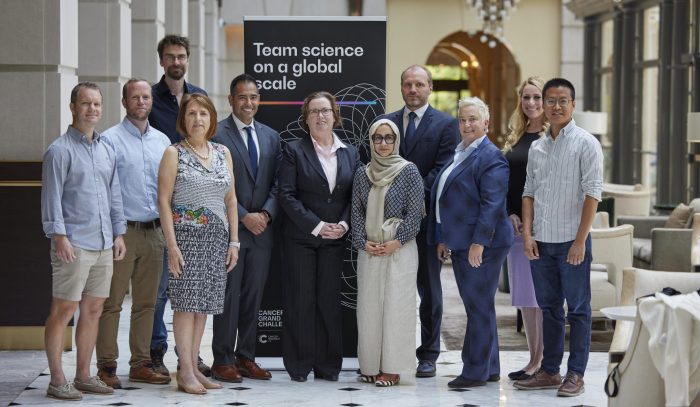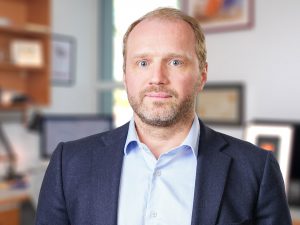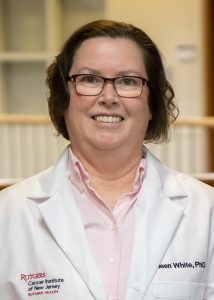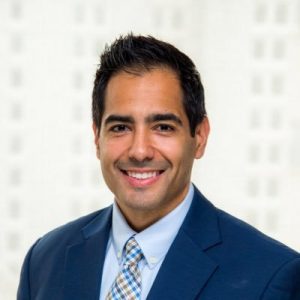CSHL’s Tobias Janowitz helps lead cancer team that won $25 mln in research funding

By Daniel Dunaief
If a team Cold Spring Harbor Laboratory Assistant Professor Tobias Janowitz co-leads succeeds, researchers will know more about the end stage of numerous types of cancer that involves the loss of tissue and muscle mass.

Recently, lead scientists Janowitz; Eileen White, Rutgers Cancer Institute of New Jersey Deputy Director and Chief Scientific Officer; and Dr. Marcus DaSilva Goncalves, Assistant Professor of Medicine at Weill Cornell Medicine received $25 million in funding as a part of a Cancer Grand Challenge, which is a combined trans-Atlantic funding effort between Cancer Research UK and the National Cancer Institute in the United States.
The cachexia group was one of four teams to receive funding among 11 finalists.
Bruce Stillman, president of Cold Spring Harbor Laboratory, described cachexia as “one of the most difficult clinical problems with late stage cancer.”
Stillman added that the collaboration is promising because it brings together a group of “remarkable” scientists, including White, who was a postdoctoral fellow in Stillman’s lab. “It has great potential for making a difference in the lives of patients.”
Stillman believes Janowitz is an ideal co leader for this challenging project because he has an MD and a PhD and is clinically certified as an oncologist.
CanCan team
For his part, Janowitz is looking forward to the opportunity to team up with other ambitious research efforts to create a virtual institute.

“It’s incredibly exciting to get the chance to do something you think is higher risk with a large group of people who have come together around this problem,” said Janowitz. “We often talked about how it would be nice to bring team members from other disciplines into this area.”
Indeed, the cachexia team, which White named CanCan for Cancer Cachexia Action Network believes cachexia is a tumor-driven metabolic imbalance. The group is pursuing different areas of research, including metabolism, neuroendocrinology, clinical research, and immunology, among others, to define clinical subtypes with the hopes of creating individualized therapies.
While the effort brings together a range of scientists with different expertise and technological skills, researchers don’t expect an immediate therapeutic solution within that time frame. Rather, they anticipate that their experiments and clinical data will help inform future approaches that could enhance efforts to prevent and treat a wasting disease that causes severe declines in a patient’s quality of life.
“What we would deem as a success is, if in five years time, we have maybe one to three strong lead hypotheses that comes out of our shared work on how we can either prevent or treat cachexia as it emerges,” Janowitz said.
The complexity of cachexia

As a complex process that involves an understanding of numerous interconnected dynamics, cachexia has been a challenging field for researchers and a difficult one for funding agencies looking for discrete problems with definable results and solutions.
Cachexia research had “never reached this critical mass that people were seeing where we can say, ‘Okay, there’s enough work going on to really unravel this,’” Janowitz said.
The CanCan team has several scientific themes. Janowitz will be involved with metabolic dysregulation. He would like to understand the behavioral changes around appetite and food intake.
Additionally, the group will explore the interaction of normal cells and cancer cells by looking at the tumor micro environment. This research will explore how cancer cells can reprogram healthy host cells.
“We’ve got a really exciting axis of research” within the network, Janowitz said.
Searching for signaling molecules
Janowitz said Norbert Perrimon, James Stillman Professor of Developmental Biology at Harvard Medical School is one of the leading experts in fly genetics and fly biology. Perrimon has created a model of cachexia in the fruit fly. While that sounds far from patients, Perrimon can use single molecule resolution of the entire organism to get an insight and understanding of candidate molecules.
“We are hoping to search for new signaling molecules that might get involved” in cachexia, Janowitz said. Once the research finds new candidates, he and others can validate whether they also work in mouse models of cancer and cancer cachexia.
With numerous clinical groups, Janowitz hopes to contribute to the design and execution of experimental medicine studies.
The Cancer Grand Challenge will distribute the funds based on what members need. Janowitz described the allocation of funds as “roughly equitable.” He will use that funding to support a postdoctoral researcher, a PhD student and a technician, who can help with specific projects he’s merging in his lab to combine with the team effort.
The funds will also support his salary so he can supervise the work in his lab and help with the coordination of this effort.
The funding agencies have an additional budget to organize conferences and meetings, where researchers can discuss ideas in person and can ensure that any clinical and laboratory work is standardized and reproducible in different facilities.
Cold Spring Harbor Laboratory will host the first full gathering of the cachexia team in November.
Challenging beginnings
When he was a doctor in the United Kingdom, Janowitz was fascinated and confounded by cachexia. In the early years of his training, he saw patients who had a small tumor burden, but were so sick that they died. Those experiences made “such a strong imprint” that he wanted to help unravel this process as a junior oncologist, he said.
Getting funding was challenging because cachexia was complex and didn’t involve a finely defined project that linked a receptor protein to a cell type that led to a diseased condition.
Janowitz, among others in this field, felt passionate enough about this area to continue to search for information about cachexia. After he restructured his research into a narrower focus, he secured more funding.
An unsolved mystery
With enough researchers continuing along this path, Janowitz said the group developed an awareness that this is “one of the big, unsolved mysteries of cancer progression.”
Janowitz appreciates the opportunity to work with a team that has accomplished researchers who work in fields that are related or synergistic, but aren’t necessarily considered part of the cachexia field.
The significant funding comes with expectations.
“The grant is both a great joy, but also, essentially, a mandate of duty,” he said. “Now, you have to utilize this grant to make significant contributions to understand and hopefully treat this debilitating condition.”






